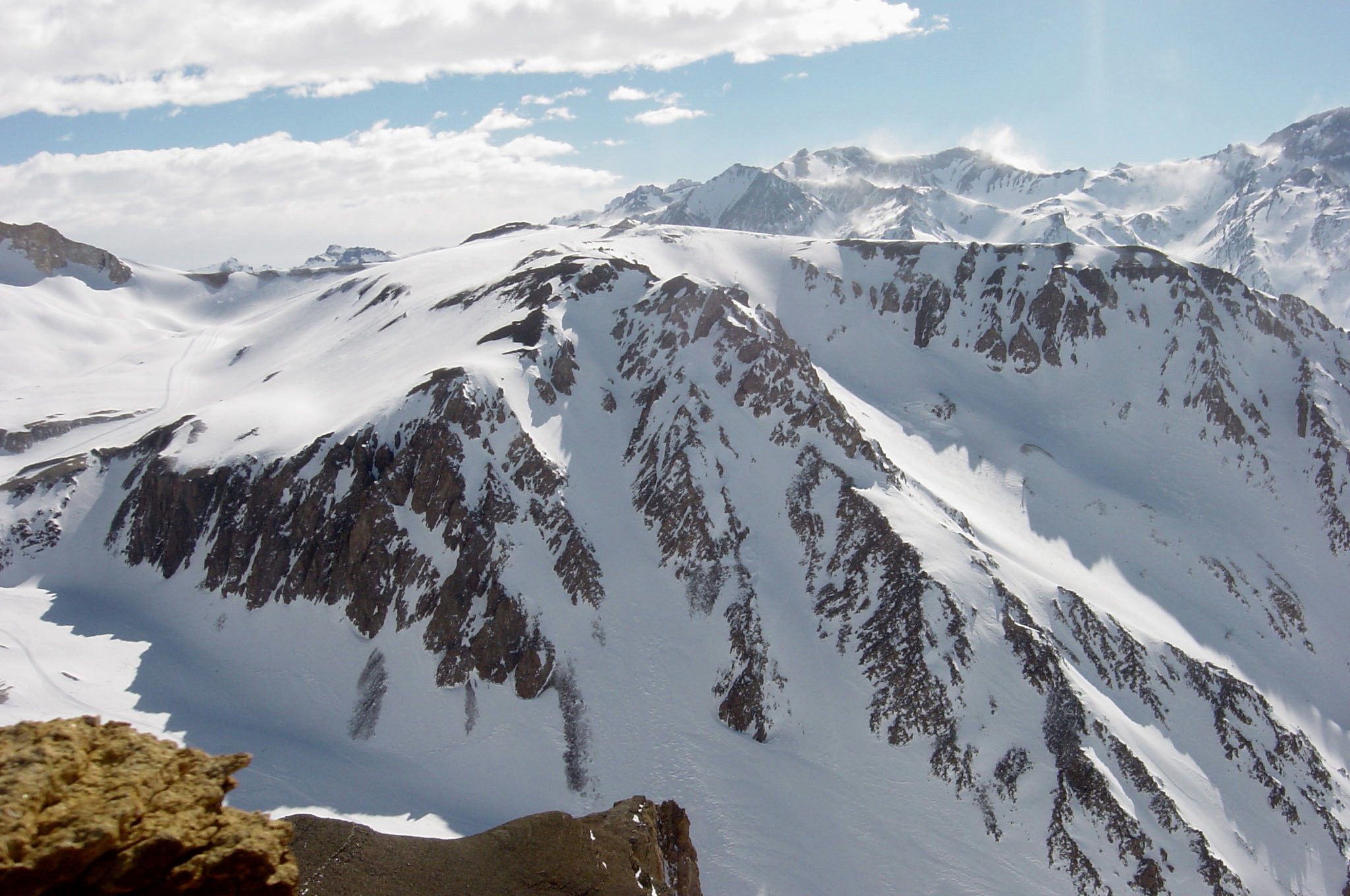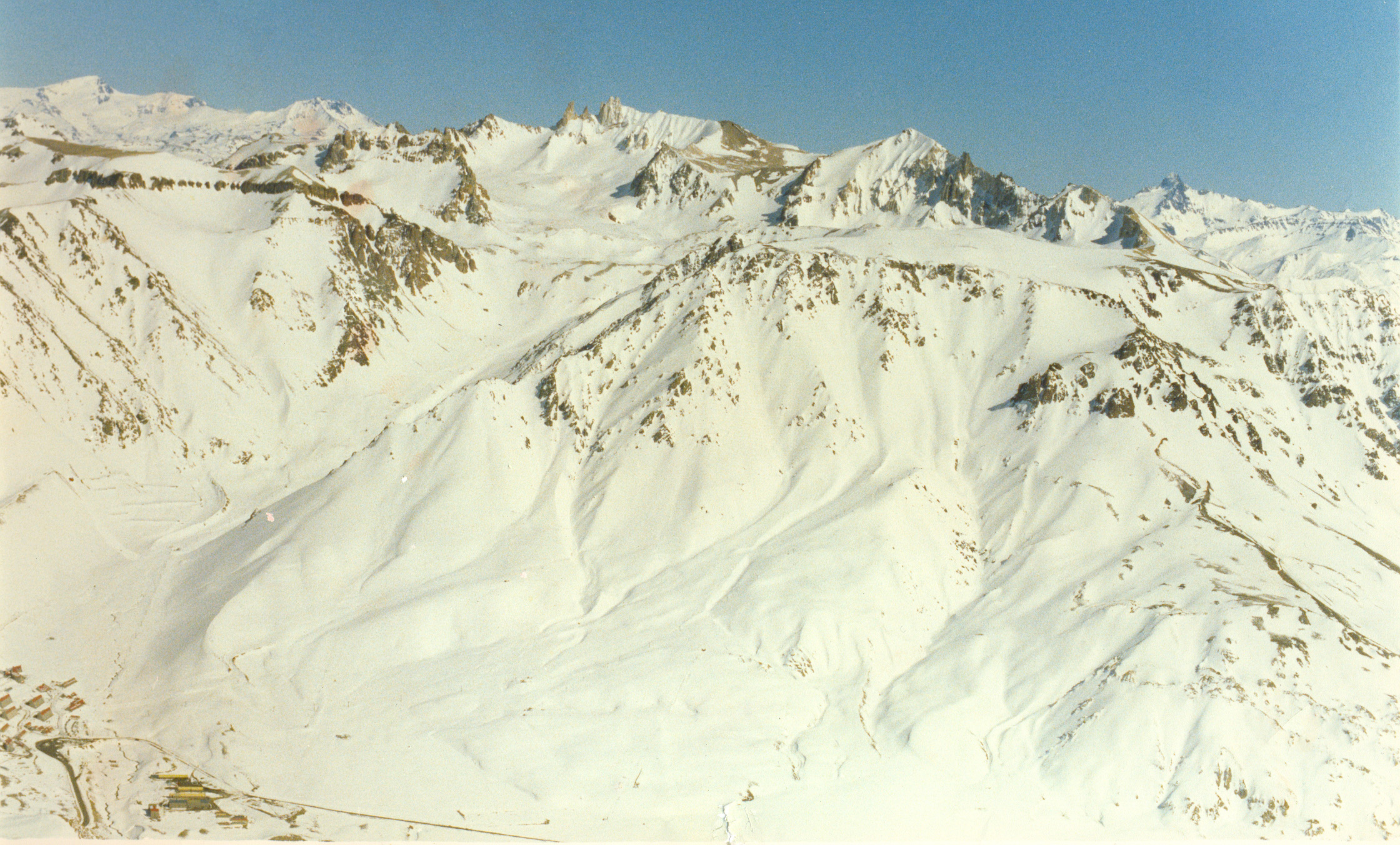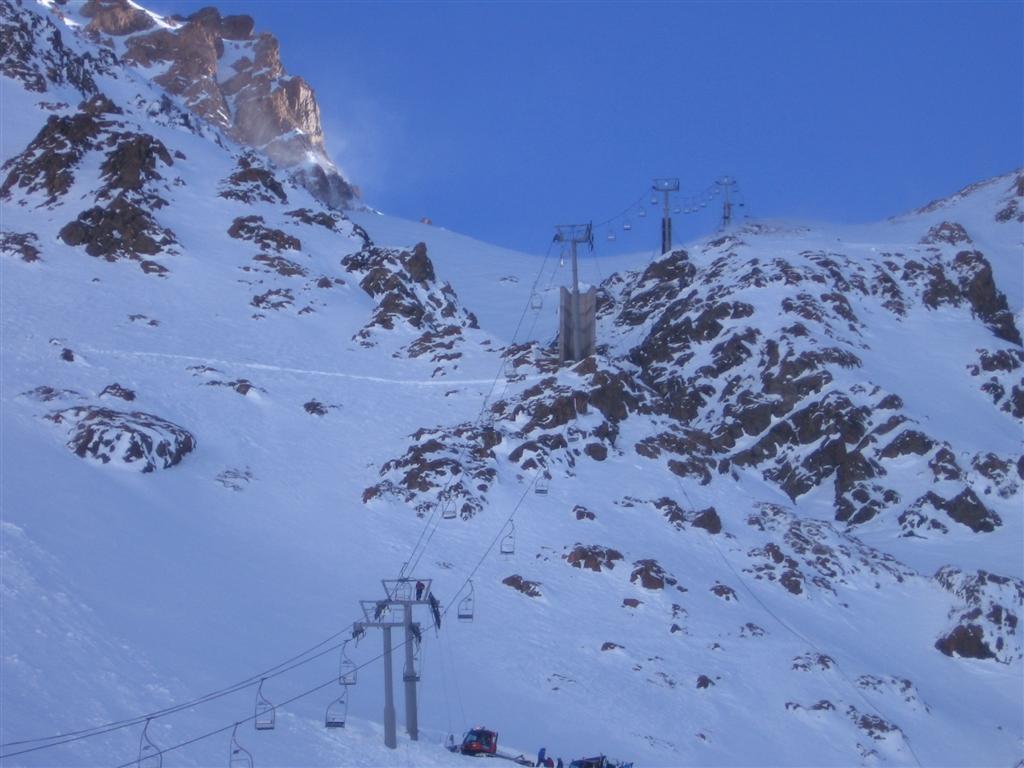Extremely Canadian put me in contact with Jeff Eckland, a new Las Lenas director of mountain operations who formerly worked at Kirkwood.
Here is the summary of our e-mail correspondence. I think it illuminates the challenges at Las Lenas quite well.
1) Marte operates about 40% of the time. This is based upon actual chair loadings during the 2009 season compared to the Minerva and Vulcano lifts and fits the "gut reaction" of repeat visitors.
2) Avalanche control is more complex than in North American resorts, more comparable to Chamonix in France. "We have Catex---Cable Explosives Delivery Systems, basically a small ski lift that spans the top ridges here---very common in Europe, unheard of in the USA. And Gazex---also common in Europe, but typically only owned by Highway Departments in the USA. Every single storm, 5 people are stationed up at the top of Marte in our Catex facility at the top patrol station which is called Bora Bora. We have to carefully watch the storms to get up there before it arrives, and we are trapped up there for the entire duration of the storm, with supplies and diesel and explosives to last up to 10 days. The record thus far is 9 days for one team. 4 of the team are Catex and explosives experts, and 1 is a dedicated snowcat operator who continually digs out the top terminal of Marte and also digs out the Iris Teleski----a huge job to try to keep up with the drifting snow all night. Those teams do avalanche control from above, and we do further work down here in the base, where we fire the Gazex, the Avalaunchers, and the 75mm Howitzers. We protect the faces above Caris, Minerva, and Vulcano with the Howitzers, and they are further protected higher above with the Catex and Gazex. The crew at Bora Bora hardly sleeps---during the storms every 4 hours we must wake up and do a Catex mission to protect Marte." When storms are over, the top of the Vulcano lift often needs to be excavated as well.
3) The top of Marte is wind exposed, could result in closure 25+% of days even when storms and avalanche control are not factors.
4) Why weren't lifts built up the sheltered Apolo Valley rather than in Marte's exposed location? "When they built Las Leñas in the early 80's, they wanted to use this alignment, but the Apolo valley is an old glacial channel, and the surface is 100% unstable permafrost. The engineers chose to put Marte up in the rocks where it exists now because they were discouraged by the lack of stability in the permafrost. But modern lift foundation technology and concrete chemistry are now advanced enough to allow lifts to be in the Apolo Valley, funds permitting."
5) The ideal solution for Las Lenas would be an aerial lift to the top from the frontside base, preferable the more wind-resistant double-cable Funitel design used at Squaw Valley. Unfortunately cost in North America would be similar to the $25 million for the recent new Jackson Hole tram. And in Argentina there would be a 50% import tariff on that. This tariff applies to any new equipment Las Lenas might need, like new snowcats or cheaper lifts in the Apolo Valley.
At my request Admin has added the above to my feature article from 2005: http://www.firsttracksonline.com/News/2 ... ort-Guide/
I'm seeing a lot of hex coding and inconsistent formatting there, which Admin is not seeing on his end.
Here is the summary of our e-mail correspondence. I think it illuminates the challenges at Las Lenas quite well.
1) Marte operates about 40% of the time. This is based upon actual chair loadings during the 2009 season compared to the Minerva and Vulcano lifts and fits the "gut reaction" of repeat visitors.
2) Avalanche control is more complex than in North American resorts, more comparable to Chamonix in France. "We have Catex---Cable Explosives Delivery Systems, basically a small ski lift that spans the top ridges here---very common in Europe, unheard of in the USA. And Gazex---also common in Europe, but typically only owned by Highway Departments in the USA. Every single storm, 5 people are stationed up at the top of Marte in our Catex facility at the top patrol station which is called Bora Bora. We have to carefully watch the storms to get up there before it arrives, and we are trapped up there for the entire duration of the storm, with supplies and diesel and explosives to last up to 10 days. The record thus far is 9 days for one team. 4 of the team are Catex and explosives experts, and 1 is a dedicated snowcat operator who continually digs out the top terminal of Marte and also digs out the Iris Teleski----a huge job to try to keep up with the drifting snow all night. Those teams do avalanche control from above, and we do further work down here in the base, where we fire the Gazex, the Avalaunchers, and the 75mm Howitzers. We protect the faces above Caris, Minerva, and Vulcano with the Howitzers, and they are further protected higher above with the Catex and Gazex. The crew at Bora Bora hardly sleeps---during the storms every 4 hours we must wake up and do a Catex mission to protect Marte." When storms are over, the top of the Vulcano lift often needs to be excavated as well.
3) The top of Marte is wind exposed, could result in closure 25+% of days even when storms and avalanche control are not factors.
4) Why weren't lifts built up the sheltered Apolo Valley rather than in Marte's exposed location? "When they built Las Leñas in the early 80's, they wanted to use this alignment, but the Apolo valley is an old glacial channel, and the surface is 100% unstable permafrost. The engineers chose to put Marte up in the rocks where it exists now because they were discouraged by the lack of stability in the permafrost. But modern lift foundation technology and concrete chemistry are now advanced enough to allow lifts to be in the Apolo Valley, funds permitting."
5) The ideal solution for Las Lenas would be an aerial lift to the top from the frontside base, preferable the more wind-resistant double-cable Funitel design used at Squaw Valley. Unfortunately cost in North America would be similar to the $25 million for the recent new Jackson Hole tram. And in Argentina there would be a 50% import tariff on that. This tariff applies to any new equipment Las Lenas might need, like new snowcats or cheaper lifts in the Apolo Valley.
At my request Admin has added the above to my feature article from 2005: http://www.firsttracksonline.com/News/2 ... ort-Guide/
I'm seeing a lot of hex coding and inconsistent formatting there, which Admin is not seeing on his end.


